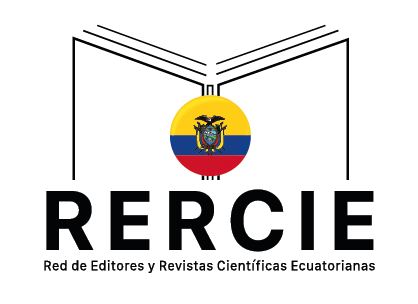Identificación de parámetros en sistemas ecuaciones diferenciales ordinarias mediante el uso de redes neuronales artificiales
DOI:
https://doi.org/10.36097/rsan.v1iEspecial_2.2826Palabras clave:
Métodos numéricos, ajuste de parámetro, redes neuronales artificiales, algoritmo Backpropagation, método Levenberg-MarquardtResumen
La identificación de parámetros en sistemas de ecuaciones diferenciales constituyó un desafío científico complejo, con métodos tradicionales limitados para modelar fenómenos físicos no lineales y datos experimentales inconsistentes. El objetivo fue comparar una red neuronal artificial entrenada con Backpropagation y optimizada mediante Levenberg-Marquardt contra métodos numéricos clásicos para identificar parámetros en ecuaciones diferenciales ordinarias. Se diseñó una red neuronal multicapa con una entrada, una capa oculta de 10 neuronas y dos salidas. El modelo se entrenó con datos experimentales divididos en conjuntos de entrenamiento, validación y prueba, utilizando el algoritmo Levenberg-Marquardt para ajustar sus parámetros. La precisión se evaluó comparando con el método numérico ODE45, basado en Runge-Kutta. La red neuronal demostró un rendimiento superior, logrando una aproximación precisa y menos compleja computacionalmente. Mientras el método ODE45 presentó buenos ajustes generales, mostró limitaciones en intervalos específicos debido a picos y discontinuidades en las funciones simuladas. La red neuronal exhibió robustez para manejar dinámicas no lineales, prediciendo con alta precisión el comportamiento del sistema sin requerir un modelo matemático explícito. Su capacidad para reconocer patrones complejos con márgenes de error tolerables la consolidó como una herramienta eficaz para sistemas dinámicos. En conclusión, las redes neuronales artificiales se confirmaron como una alternativa metodológica robusta, permitiendo modelar sistemas no lineales dinámicos con simplicidad, flexibilidad y potencial de escalabilidad.
Descargas
Referencias
Binu, D., & Rajakumar, B. R. (2021). Artificial Intelligence in Data Mining. Elsevier Inc. https://doi.org/10.1016/C2019-0-01255-1
Chintha, H. P., & Chatterjee, A. (2022). Identification and parameter estimation of non-polynomial forms of damping nonlinearity in dynamic systems. International Journal of Non-Linear Mechanics, 143. https://doi.org/10.1016/j.ijnonlinmec.2022.104017
Cybenko, G. (1989). Approximation by superpositions of a sigmoidal function. Math. Control Signal Systems, 2, 303-314. https://doi.org/10.1007/BF02551274
De-kui, L., & Xing-min, W. (2023). Dislocated function projective partial synchronization between dynamical systems. Alexandria Engineering Journal, 66, 919-926. https://doi.org/10.1016/j.aej.2022.10.065
Dennis, J. E., & Schnabel, R. B. (1983). Numerical Methods for Unconstrained Optimization and. Prentice-Hall International.
Diamessis, J. E. (1965). A new method for determining the parameters of physical systems. Proceedings of the IEEE, 53(2), 205-206. https://doi.org/10.1109/PROC.1965.3642
Erazo Yánez, C. P., & Navarrete Cedillo, G. A. (2023). Detección de pistas aéreas ilegales en imágenes digitales empleando técnicas de inteligencia artificial. Ciencia y Poder Aéreo, 18(1), 47-56. https://doi.org/10.18667/cienciaypoderaereo.758
Figueredo Ávila, G., & Ballesteros Ricauter, J. (2016). Identificación del estado de madurez de las frutas con redes neuronales artificiales, una revisión. Ciencia y Agricultura, 13(1), 117-132. http://dx.doi.org/10.19053/01228420.4811
Gonzáles-Medina, L. E., & Vázquez, R. A. (2015). Clasificación de Malware mediante Redes Neuronales Artificiales. Revista del Centro de Investigación, 11(44), 69-102. https://www.redalyc.org/articulo.oa?id=34242142004
Guo, Y., O'Brien, J., Sivakumar, M., & Jiang, G. (2022). Back-estimation of norovirus infections through wastewater-based epidemiology: A systematic review and parameter sensitivity. Water Research, 219. https://doi.org/10.1016/j.watres.2022.118610
Hari Rao, V. S., & Yadaiah, N. (2005). Parameter identification of dynamical systems. Caos, solitones y fractales, 23(4), 1137-1151. https://doi.org/10.1016/j.chaos.2003.09.047
Jovanović, A., Stevanović, A., Dobrota, N., & Teodorović, D. (2022). Ecology based network traffic control: A bee colony optimization approach. Engineering Applications of Artificial Intelligence, 115. https://doi.org/10.1016/j.engappai.2022.105262
Lastre Aleaga, A., Méndez Garcés, E., & Cordovés García, A. (2015). Sistema automatizado para la predicción de flujo de carga en subestaciones eléctricas mediante redes neuronales artificiales. Enfoque UTE, 6(3), 20-35. https://www.redalyc.org/articulo.oa?id=572260848002
Lee, J., De Brouwer, E., Hamzi, B., & Owhadi, H. (2023). Learning dynamical systems from data: A simple cross-validation perspective, Part III: Irregularly-sampled time series. Physica D: Nonlinear Phenomena, 443(133546). https://doi.org/10.1016/j.physd.2022.133546
Margaglio, E., & Uria, M. (1994). Identification of Multivariable Industrial Processes Using Neural Networks: An Application. IEEE. IEEE.
Meidani, K., & Barati Farimani, A. (2023). Identification of parametric dynamical systems using integer programming. Expert Systems with Applications, 219, 119622. https://doi.org/10.1016/j.eswa.2023.119622
Modest, M. F. (2003). Radiative Heat Transfer. Elsevier Inc. https://doi.org/10.1016/B978-0-12-503163-9.X5000-0
Raju P, E., & Terzija, V. (2023). Power system loads modeling. Encyclopedia of Electrical and Electronic Power Engineering, 186-208. https://doi.org/10.1016/B978-0-12-821204-2.00140-9
Rumelhart, D. E., Hinton, G. E., & Williams, R. J. (1986). Learning representations by back-propagating errors. Nature, 323, 533–536. https://doi.org/10.1038/323533a0
Sage, A. P., & Melsa, J. L. (1971). System Identification (First Edition ed.). Academic Press: New York.
Saldarriaga, J. F. (2022). Application of an artificial neural networks for predicting the heat transfer in conical spouted bed using the Nusselt module. Heliyon, 8(11), e11611. https://doi.org/10.1016/j.heliyon.2022.e11611
Sancho Caparrini, F. (2017). Redes Neuronales: una visión superficial. Universidad de Sevilla. http://www.cs.us.es/~fsancho/?e=72
Sarmiento-Ramos, J. L. (2020). Aplicaciones de las redes neuronales y el deep learning a la ingeniería biomédica. Revista UIS Ingenierías, 19(4), 1-18. https://doi.org/10.18273/revuin.v19n4-2020001
Tarigan, J., Nadia, Diedan, R., & Suryana, Y. (2017). Plate Recognition Using Backpropagation Neural Network and Genetic Algorithm. Procedia Computer Science, 116, 365-372. https://doi.org/10.1016/j.procs.2017.10.068
van Ophem, S., & Desmet, W. (2022). Physics-based sound radiation estimation from multiple speakers by combined lumped parameter and reduced-order finite element modeling. Mechanical Systems and Signal Processing, 167(Part B). https://doi.org/10.1016/j.ymssp.2021.108585
Wang, Y., Liu, J., Li, R., Suo, X., & Lu, E. (2020). Precipitation forecast of the Wujiang River Basin based on artificial bee colony algorithm and backpropagation neural network. Alexandria Engineering Journal, 59(3), 1473-1483. https://doi.org/10.1016/j.aej.2020.04.035
Yan, J., Laflamme, S., Hong, J., & Dodson, J. (2021). Online parameter estimation under non-persistent excitations for high-rate dynamic systems. Mechanical Systems and Signal Processing, 161. https://doi.org/10.1016/j.ymssp.2021.107960
Zhang, Y., Zhu, X., & Gao, J. (2021). Hidden physics model for parameter estimation of elastic wave equations. Computer Methods in Applied Mechanics and Engineering, 381. https://doi.org/10.1016/j.cma.2021.113814
Descargas
Publicado
Número
Sección
Licencia
Derechos de autor 2025 Francisco Javier Duque Aldaz, Fernando Raúl Rodríguez-Flores, José Carmona Tapia

Esta obra está bajo una licencia internacional Creative Commons Atribución-NoComercial-SinDerivadas 4.0.















